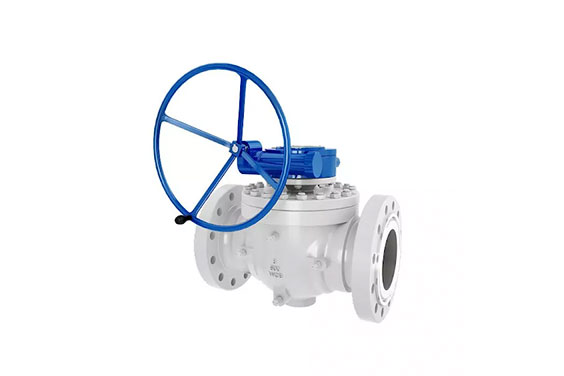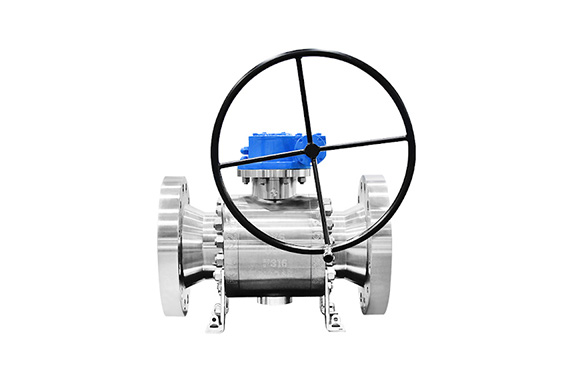Every ball valve, whether manual or operated, flanged or NPT, brass or stainless steel, serves a different purpose for an industrial piping system. That’s why it is vital to understand their operation and features to select a suitable one from the best valve manufacturer in China.
A one-piece ball valve features a solid cast body to reduce the risk of leakage. It is inexpensive, and it is impossible to repair it. Similarly, fixing a two-piece ball valve is impossible unless it is removed from service. Such a valve comprises two pieces where one piece has one end connection and the body. The other piece fits into the first one to hold the trim and includes the second-end connection.
Although the differences between these two valves are tricky, their understanding is essential for various processes. So, let’s learn everything about one-piece vs. two-piece ball valves!
Everything to Learn About One-Piece Ball Valve:

A single or a one-piece ball valve features only one body part. In this device, the trim attaches to the seals through end connections made of the same material as the body. Since its port size is not the same as its line, it results in a small bore design. A device bought from an industrial ball valve company comprises a ball, a PTFE ring, and a lock nut.
Users rarely or never experience leakage problems with this type of construction. However, the main downside to this type of device is it is irreparable, i.e., it cannot be replaced. It features a reduced diameter, and its flow diameter is smaller than the thread diameter.
Advantages of Using One-Piece Ball Valve:
- It provides little fluid resistance and zero friction on the switch.
- Its resistance coefficient is similar to that of the same length of pipe.
- It is lightweight and takes up very little space in a piping system.
- Its sealing surface material is used with good sealing performance and a vacuum system.
- It is easy to operate and quick to open and close due to 90 degrees rotation.
- Its maintenance is convenient as its structure is simple, the sealing ring is movable, and it is convenient to replace and dismantle.
- It is more affordable than its competitors due to its simple design.
Since it is a relatively new ball valve type, it offers some unique advantages, reducing the size of the actuator. Its working principle is to make the valve unblocked or blocked by rotating it.
In high-demand industries, a one-piece ball valve is rarely employed because they are difficult to repair and replace. However, a one-piece ball valve can be utilized in applications where a reduced flow is not a concern. It works effectively in such applications. Some common uses of this device are in food service machinery, liquid filling equipment, and motor fluid filing equipment.
Everything to Learn About Two-Piece Ball Valve:

A two-piece ball valve contains two independent components connecting them through a bolt, thread, or flange assembly. These pieces have body and end connections. However, since two separate sections are combined in this valve body, there is a high chance of leakage. It is used to cut off, distribute, and alter the flow direction of the medium in the pipeline.
As a result, a two-piece ball valve is unsuitable for high-pressure applications. Unlike a one-piece valve, it is possible to disassemble it for internal component repair because of the connection. Its sealing effect is better than a one-piece ball valve and is further divided into a top entry floating ball valve, an elastic, and fixed one.
Advantages of Using Two-Piece Ball Valve:
- It offers minimal fluid resistance whose coefficient is equal to the same length of a pipe.
- It is lightweight, occupies less space, and its design provides good sealing performance.
- Its structure is convenient to repair and maintain due to its simple design and movable ring.
- Since the valve seat and sealing are isolated from the medium, there is no corrosion on the sealing surface.
- Its medium does not erode the piece quickly because its sealing cover and seat are isolated.
- It requires only a 90 degrees turn to open or close, thus making it convenient for remote control.
A two-piece ball valve is commonly used in various applications with any media because of the ease of maintenance in a wide range of industries. A few industries employing a two-piece ball valve in their applications include food, manufacturing, and automotive. Its working principle is to block the valve or unblock it by rotating it.
Difference Between One-Piece and Two-Piece Ball Valve:

Here is a quick table to help people understand everything they need to know about one-piece vs. two-piece ball valves:
| BASIS OF DIFFERENCE | ONE-PIECE BALL VALVE | TWO-PIECE BALL VALVE |
| NUMBER OF PIECES | It consists of a single, solid cast body. | It contains two separate pieces, with the connection either through a bolt and flanged assembly or threaded. |
| REPAIR OR SERVICE | It is impossible to repair or service a one-piece ball valve. | A two-piece ball valve allows for limited repair and maintenance. |
| PORT AVAILABILITY | A one-piece ball valve does not have the same port size as the line. | A two-piece ball valve is available in complete port configurations. |
| COST | Acquiring a one-piece ball valve is cheaper than a two-piece ball valve. | A two-piece ball valve is a costlier option than a one-piece ball valve. |
| COMMON APPLICATIONS | Foodservice equipment, liquid filling, petrochemical city water supply and drainage, and automotive fluid filling equipment. | Foodservice equipment and automotive industries. |
| DISASSEMBLEMENTIt is impossible to disassemble a one-piece ball valve for internal component repair. | Unlike a one-piece ball valve, it is possible to disassemble it for internal component repair. |
In industrial piping systems, a ball valve functions as a shut-off device to regulate the flow of media, especially liquids and gases, passing through it. It controls the flow by rotating the ball with a bore located inside it. Industrial valve manufacturers offer their devices in several industries, including chemical storage, oil and gas, residential applications, and manufacturing.
Since it is available in many types, such as one piece, two pieces, and three pieces, choosing the one with a body suitable for a particular application often becomes challenging. While a one-piece ball valve has only one body portion, a two-piece valve has two body components threaded together.
Parting Words
A one-piece ball valve is typically considered a thrown-away because it is difficult to repair it for maintenance. But it is still an economical option than its counterparts, such as a two-piece valve that feature a main body and a single-end connection. One can quickly repair it, but it is often difficult due to galling in the threads when the end plug removes from the valve body.
Hopefully, this guide helps select the most appropriate ball valve for a specific application. You can contact us to purchase high-quality ball valves from a reliable manufacturer.









